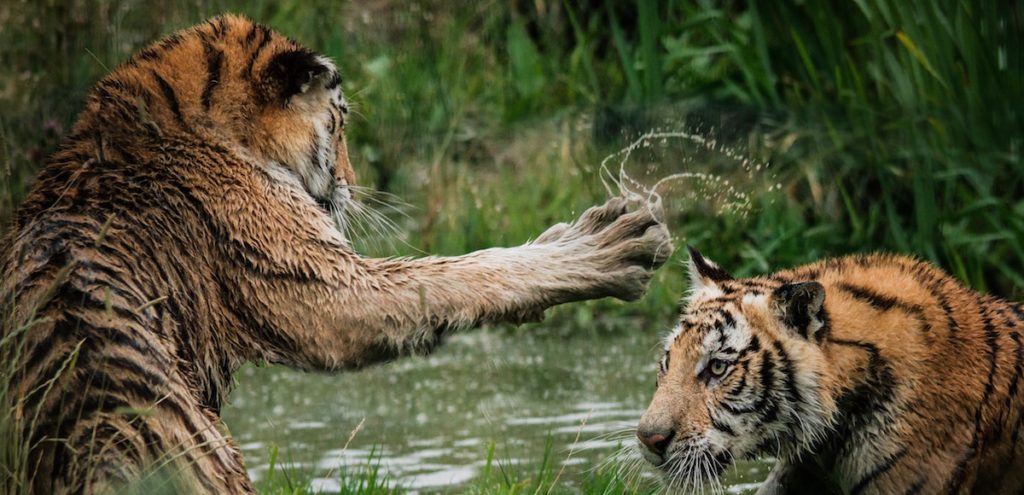Todd Henry writes and speaks about creativity, productivity and passion at work. He is a blogger, podcaster, presenter and author of four books. In short, Todd describes himself as “an arms dealer for the creative revolution.”
I personally feel like I have been well-armed as a creative professional (mercenary?) because I’ve been reading and listening to Todd Henry for years. So, I was thrilled when Todd agreed to an interview discussing his latest book, Herding Tigers: Be the Leader That Creative People Need. Since this book addresses the intersection of creativity and leadership, two topics this blog focuses on, I wanted to share this conversation with you.
 How does this book fit in with your previous publications (The Accidental Creative, Die Empty, Louder Than Words)?
How does this book fit in with your previous publications (The Accidental Creative, Die Empty, Louder Than Words)?
Todd Henry: I’ve always written to create-on-demand professionals, who have to go to work everyday and produce brilliant solutions for their clients or organization. However, no matter how well we set ourselves up for success, if our leaders don’t understand the unique dynamics of the creative process and how to lead creative people well, there will always be a ceiling on our effectiveness. So, I wanted to write a book that didn’t exist, and the book that I always wish I’d had when I was leading creative teams. Essentially, I wanted to address what creative people need from their leadership in order to thrive, and how to give it to them more consistently.
 Why are you focused on leaders of creative teams? How is their experience different from more traditional business leaders?
Why are you focused on leaders of creative teams? How is their experience different from more traditional business leaders?
Innately creative work is unique in a few ways. First, the process is often opaque to outsiders. Many people don’t understand how ideas are formed, how they’re brought to life, and how decisions are made about which direction and strategy to pursue. So, it’s a challenge for many managers to lead the process when it’s not easy to measure progress and results in a linear way. Second, creative work is highly subjective. You can work for days or weeks on something, and in the end success or failure is often a matter of someone’s opinion, regardless of how well-reasoned your strategy was. Finally, creative work brings with it a high degree of insecurity. Unlike other kinds of work, where the employee is largely removed from the results, with creative work you have to put a huge amount of your personal intuition and perspective into what you do. Therefore, a rejection of the work can feel a bit like a rejection of you. It’s important for leaders to understand how these dynamics play out and how to manage the interpersonal dynamics on the team so that insecurity doesn’t negatively affect their contribution and collaboration.
 Do you have a story you can share that exemplifies a good leader “herding tigers?”
Do you have a story you can share that exemplifies a good leader “herding tigers?”
One of my favorite interviews was with Brian Koppelman, who is a producer and screenwriter, and is the co-creator and showrunner for the TV show Billions. He told me that it’s really important for a leader of creative people to have a clear vision, and to ensure that the vision is communicated clearly, but at the end of the day it’s critical to allow the people on your team to own the vision and to not control their every decision. Instead, you have to lead by influence and ensure that you are allowing them the freedom they need to be able to bring their unique perspective and insights to the table. This is a delicate balancing act, because as a leader you’re accountable for the results, but you’re also accountable for developing your team and allowing them the freedom to grow and take risks.
 How will your book change the people who read it?
How will your book change the people who read it?
I want leaders to (a) know they’re not alone in what they’re experiencing, (b) have terminology for some of what they’re experiencing but could never really describe, and (c) have some practical rituals and practices to help them overcome the common obstacles to producing brilliant work. In short, I want them to feel perfectly equipped to unleash the brilliance of their team.
I appreciate Todd taking the time to answer some questions about his latest book. You can find Herding Tigers: Be the Leader That Creative People Need and Todd’s other books wherever fine books are sold. As someone familiar with Todd’s work, I want to encourage anyone who works in a creative environment to read this much-needed guide for leaders of creative teams.
 How does this book fit in with your previous publications (The Accidental Creative, Die Empty, Louder Than Words)?
How does this book fit in with your previous publications (The Accidental Creative, Die Empty, Louder Than Words)? Why are you focused on leaders of creative teams? How is their experience different from more traditional business leaders?
Why are you focused on leaders of creative teams? How is their experience different from more traditional business leaders? Do you have a story you can share that exemplifies a good leader “herding tigers?”
Do you have a story you can share that exemplifies a good leader “herding tigers?” How will your book change the people who read it?
How will your book change the people who read it?
